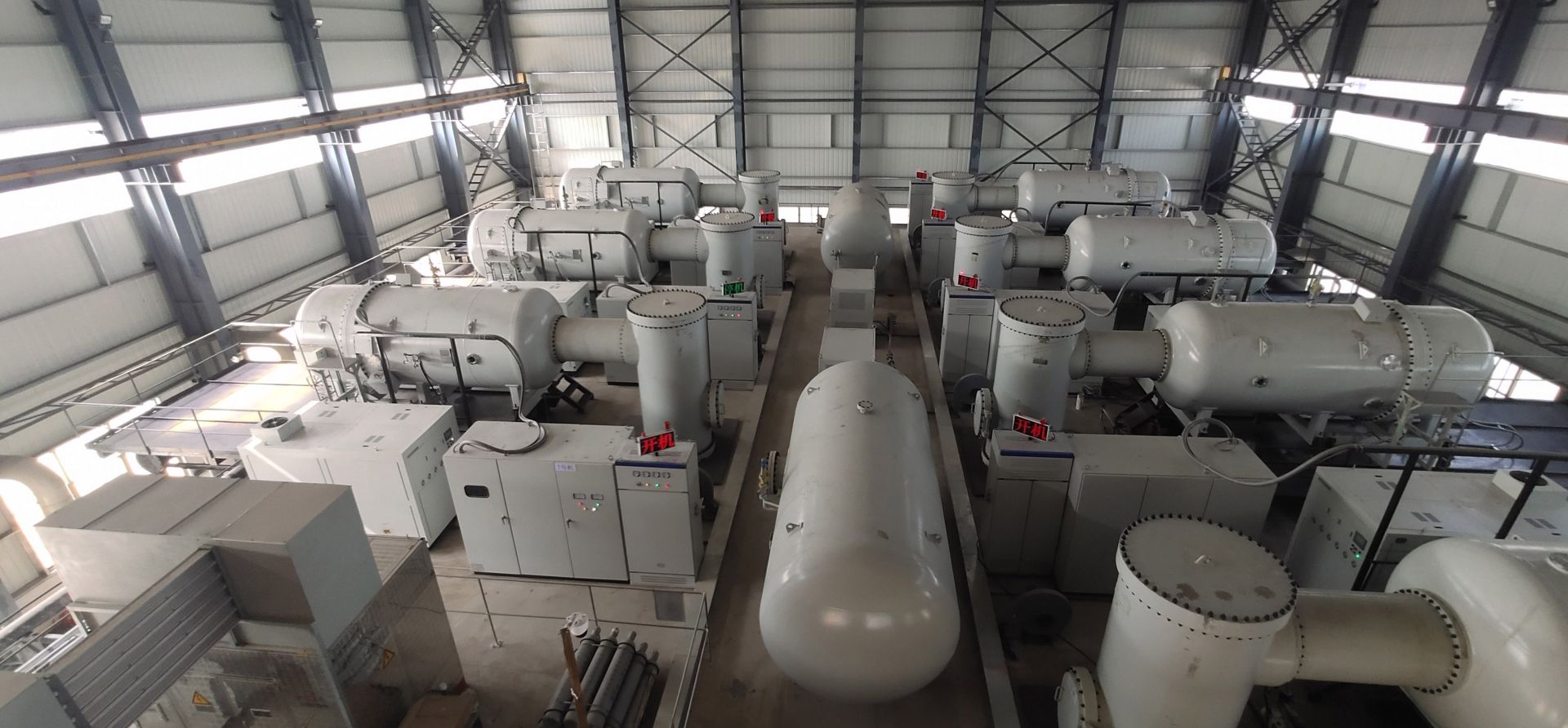October 15, 2021, 3:26PMNuclear NewsMatt Palamara, Ali Fakhar, Stephen Smith, Patrick Fabian, Nathan Lang, and George Holoman Neutron noise monitoring allowed engineers to observe and interpret vibration characteristics captured by neutron flux detectors. (Photo: PSEG/Westinghouse)
The nuclear industry has historically relied on intermittent ultrasonic test and visual inspections of pressurized water reactor components to identify and manage degradation. While this reactive approach has proven to be effective, imagine a scenario in which the degradation could propagate throughout the reactor internals, making a more proactive measure necessary to avoid a major enterprise risk to the plant. Could a utility identify the onset of degradation within the reactor internals during plant operation? If so, could a repair be developed prior to the next refueling outage to prevent additional, cascading degradation? That is exactly the situation that Public Service Enterprise Group (PSEG) and Westinghouse engineers were able to navigate over the course of the 2019–2020 operating cycle at Salem Unit 1, resulting in a tremendous success for the plant and a historic landmark in the nuclear industry, while earning the team a 2021 Nuclear Energy Institute Top Innovative Practice (TIP) award.
The National Center for Supercomputing Facility at the University of Illinois–Urbana-Champaign, supporting integrated PRA computational platforms created by the SoTeRiA lab. (Photo by UI Public Affairs: Stauffer)
Our next-generation leaders must begin to think more creatively, using risk-informed solutions to ensure safe, resilient, sustainable, and socially responsible technological advancements to usher in an era void of technological accidents. Probabilistic risk assessment (PRA) research and education provide nuclear engineering students with the scientific expertise and viable skill sets essential for meeting the growing demand for risk analysts in nuclear energy domains.
Having completed three separate decommissioning projects, EnergySolutions takes the final steps in restoring the sites to a natural state.
For any nuclear power plant that has been permanently shut down, site restoration is the ultimate decommissioning goal when contracting with a utility to demolish a facility. The task, however, is not as simple as mobilizing heavy equipment and waving a wrecking ball or planting explosives to implode the facility, then loading up the debris and sending it to a landfill.
There is a real science and engineering approach necessary to safely restore the land to its original state. That has been the goal for EnergySolutions over the past decade as the company works to safely decommission shuttered nuclear power plants—packaging, transporting, and disposing of the waste, and restoring the sites for whatever reuse the owners and host communities see fit.
September 20, 2021, 12:04PMNuclear Newsthe Standards Committee An artist’s rendering of the NuScale plant. (Image: NuScale)
For more than two decades, the American Nuclear Society’s Standards Committee has recognized the benefit of incorporating risk-informed and performance-based (RIPB) methodology into ANS standards to improve their effectiveness, efficiency, and transparency. In general, standards using RIPB methods with properly identified and structured objectives need less modification and can be expected to remain valid for much longer periods.
A new facility being built at the Advanced Photon Source will allow research into irradiated materials.
This rendering shows the Activated Materials Laboratory (AML), to be constructed as part of the Advanced Photon Source upgrade that includes the High-Energy X-ray Microscope (HEXM) and the In Situ Nanoprobe (ISN). This new facility will simplify the process of researching nuclear materials.
(Image: Argonne National Laboratory)
The lack of a specialized laboratory at Argonne National Laboratory’s Advanced Photon Source (APS) has slowed efforts to study irradiated materials at the facility. Things will change soon, however, with the addition of the new Activated Materials Laboratory that is planned to be built and operational by 2024.
The 67th president of the American Nuclear Society looks to expand the Society’s outreach across the nuclear spectrum.
If there’s one thing Steven Nesbit enjoys in life, it’s the challenge brought on by change. Whether that means growing up as a self-described “Marine brat” and moving five times before junior high school or transitioning in his professional career from the engineering side of the nuclear industry to the spent fuel and policy-driven side, Nesbit welcomes change. “I don’t mind turning the crank for a while, but I like to learn new things, and the best way to do that is to do new things.”
July 16, 2021, 3:02PMNuclear NewsCarley Willis and Joanne Liou Photo: Institute of Nuclear and New Energy Technology
With the capacity to treat 30,000 cubic meters of wastewater per day, the largest industrial wastewater treatment facility using electron beam technology in the world was inaugurated in China in June 2020. The treatment process has the capacity to save 4.5 million m3 of fresh water annually—equivalent to the amount of water consumed by about 100,000 people.
Taishan’s Unit 1 was the world’s first EPR to be connected to the grid. (Photo: CGN)
The facts, once known, were uncomplicated. At Taishan-1 in China—the first Framatome EPR to be commissioned—operators detected an increase of fission product gases within the primary coolant circuit sometime after the reactor’s first refueling outage in October 2020. The cladding on a handful of the more than 60,000 fuel rods in the reactor had been breached, posing an operational issue—but not a public safety issue—for the plant.
Training for the realities of radiological incidents and emergencies
July 9, 2021, 2:43PMNuclear NewsGreg White, Steve Kreek, William Dunlop, Joshua Oakgrove, Dan Bower, Dave Trombino, Erik Swanberg, and Steven Pike One of the biggest challenges in training for incidents and emergencies that involve high-radiation-dose hazards is balancing between realism and safety. To be truly prepared for the realities of real-world nuclear and radiological emergencies, responder personnel need experience against those hazards but without introducing additional and very personal risks associated with unnecessary radiation exposure. The difficulty is in figuring out how we can achieve a level of realism that encompasses the entire process, from the initial detection of a hazard or threat, through its characterization, to recommending actions and leadership decision-making.


-3 2x1.jpg)

















